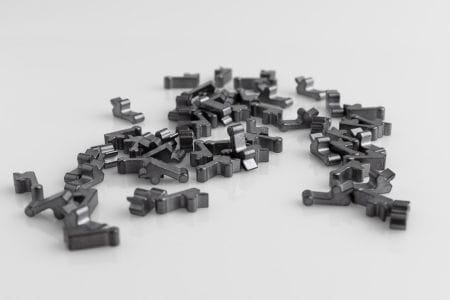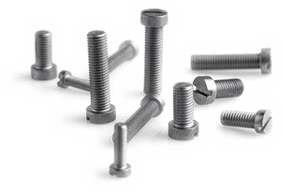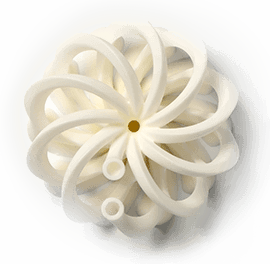Overview
Metal Injection Moulding (MIM) is a process to shape solid metal parts using metal powder mixed with a binder material. This mixture creates a feedstock, solidified using injection moulding. This process enables to shape high volume complex parts in a single step. After moulding, debinding and sintering is needed to obtain final material properties like density and accuracy. MIM is great to use for high volume production of precise parts with complex geometries and fine details. The end-products find manifold applications in many industries.
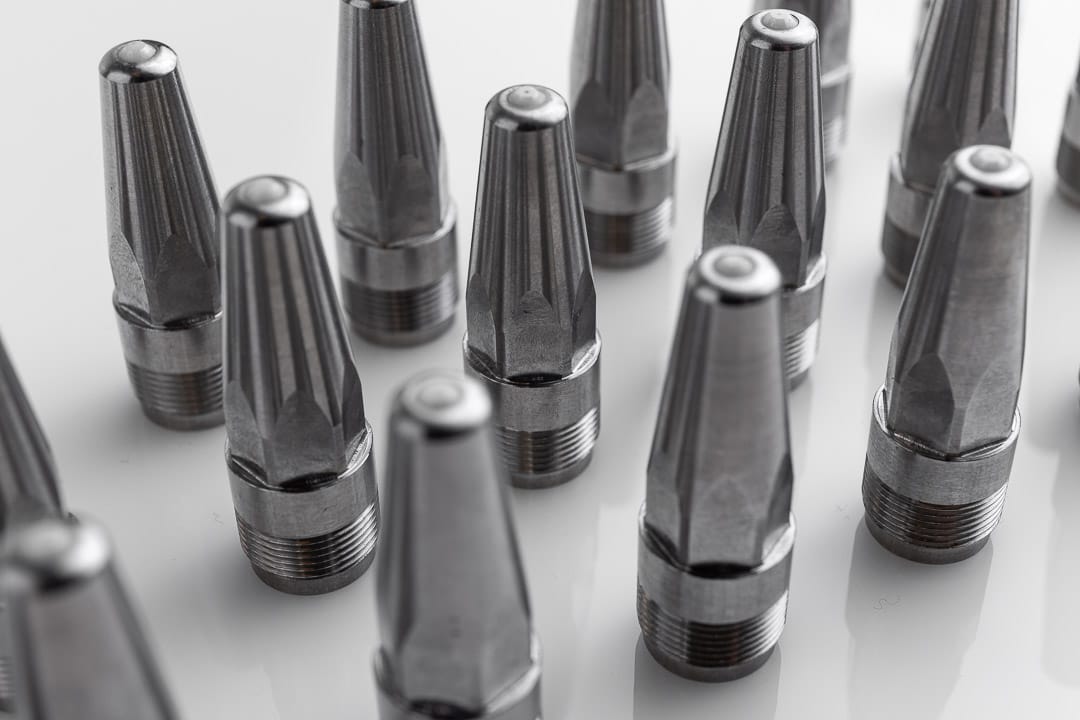
The benefits
- Design freedom for complex parts
- High density PM parts (typically > 97%)
- High volume production at low cost
- Close tolerances (±0.3% to ±0.5%)
- High repeatability
- Post-processing possibilities
- Remarkable surface finish, typically 0.8 to 1.0 μm, but less than 0.3 μm is possible
- Suitable manufacturing method for a broad range of (almost any) metal alloys
- Enables production of complex micro parts
Furthermore, MIM overcomes the dimensional and productivity limits of isostatic pressing and slip casting, the defects and tolerance limitations of investment casting, the mechanical strength of die-cast parts, and the shape limitations of traditional powder compacts.
Applications
With the ability to shape precise, complex components through MIM, there is a broad range of application in aerospace, medical, dental, automotive, industrial, firearms and consumer industries.
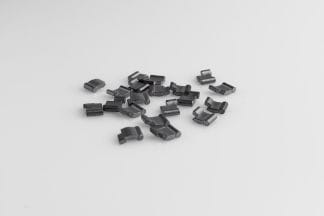

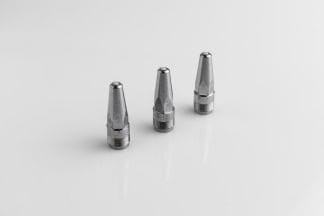
Metal injection moulding materials
There are a wide variety of metal and metal alloys available for the MIM process including different types of steel, titanium, and copper—to name a few.
We specialize in:
Stainless steel – ideal for applications requiring strength, ductility, and corrosion resistance.
Copper – most commonly used for thermal management applications that require miniaturization, improved heat transfer, and electrical conductivity.
Pure refractory metals – Molybdenum and Tungsten are heat, wear and high temperature creep resistant metals, used in high temperature applications like furnaces, plasma tools, electronics and nuclear applications.

Metal injection moulding process
Step 1
Very fine metal powders are mixed with polymer binders. This mixture is then compounded, extruded and palletized to achieve a homogeneous feedstock that can be injection molded just like plastic.
Step 2
The feedstock is heated and injected into a mould cavity under high pressure. It solidifies into a part of the required complex shape. The moulded part is now in green stage and approximately 15-20% larger than the end part due to shrinkage in the final step.
Step 3
The green part needs a subsequent process; debinding. During debinding, most binder elements are removed. The part is in a so-called brown stage, porous and quite fragile.
Step 4
To obtain the final product properties the brown part is sintered, resulting in a high density metal part. During sintering there is a substantial shrinkage of 15-20%. This has been taken into account in the design, making the end part highly accurate.
With our knowledge of the various disciplines needed for this process; powder handling, mold design, injection moulding and sintering we can ensure a stable process and a quality end-product. MIM has proven to be a reliable process providing many benefits compared to more traditional techniques.
Step 5
If desired, post-processing is possible where the metal part can be machined, heat treated, polished, coated or welded to add features, improve material or surface properties or assemble other components.
